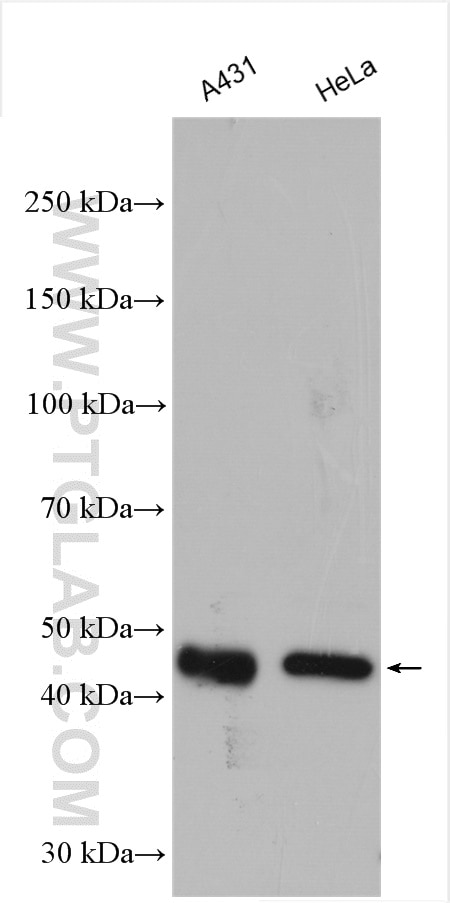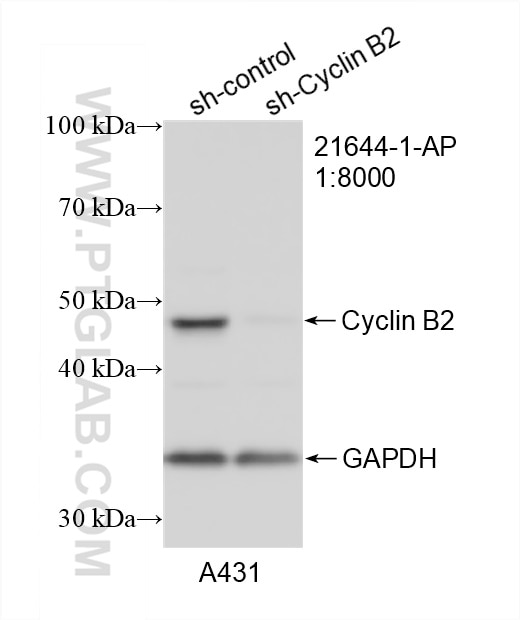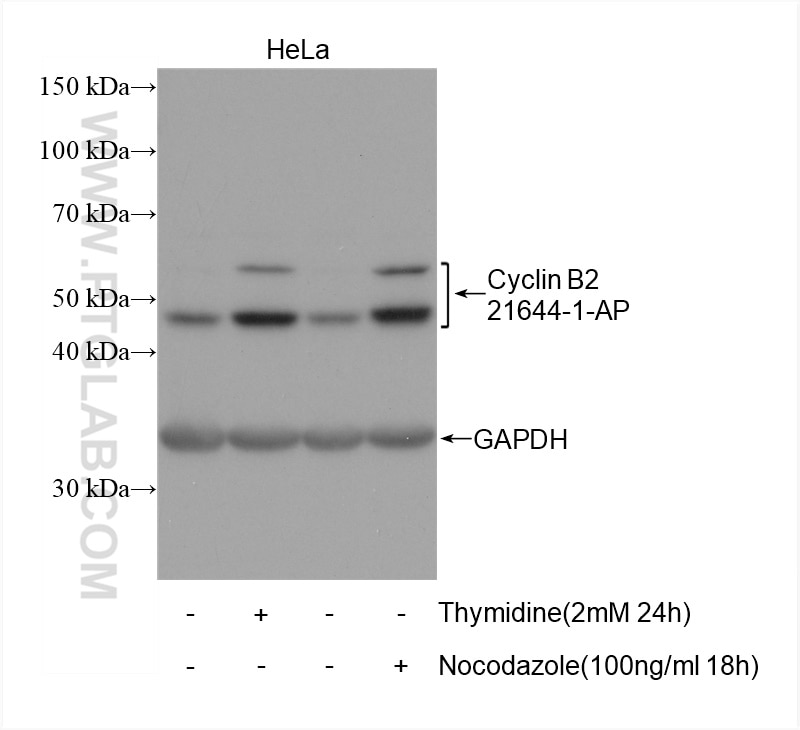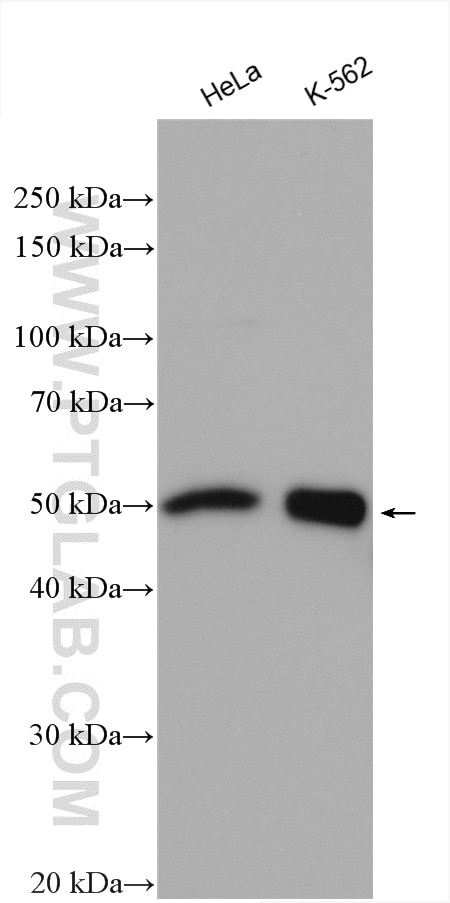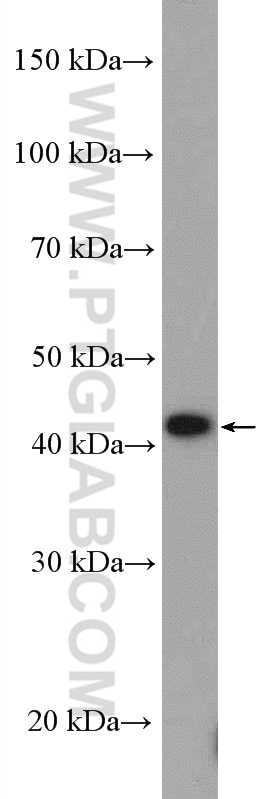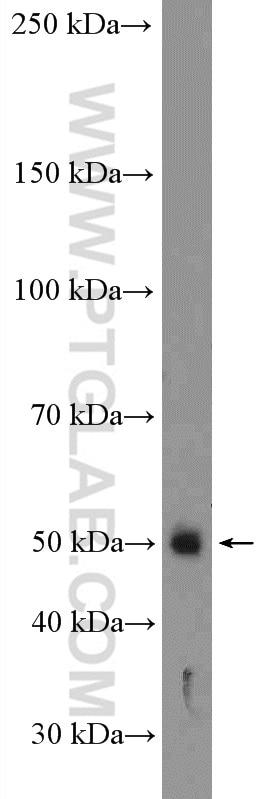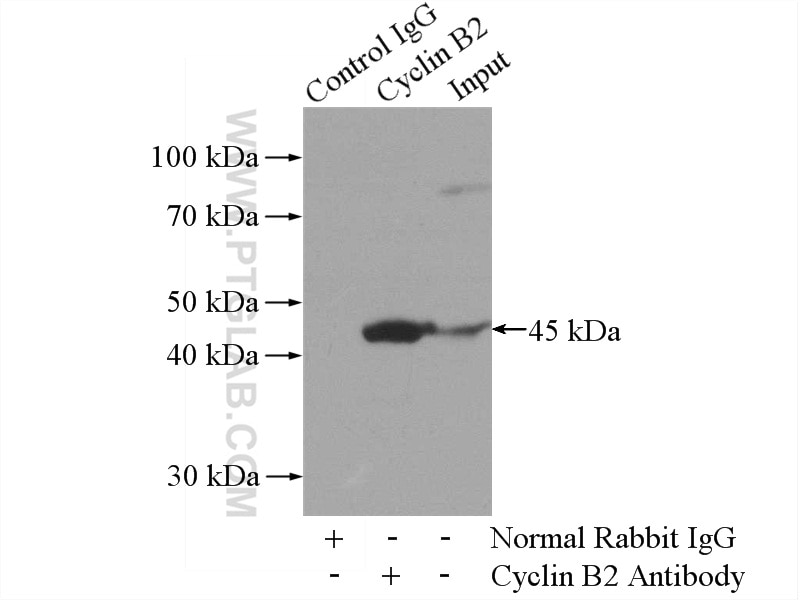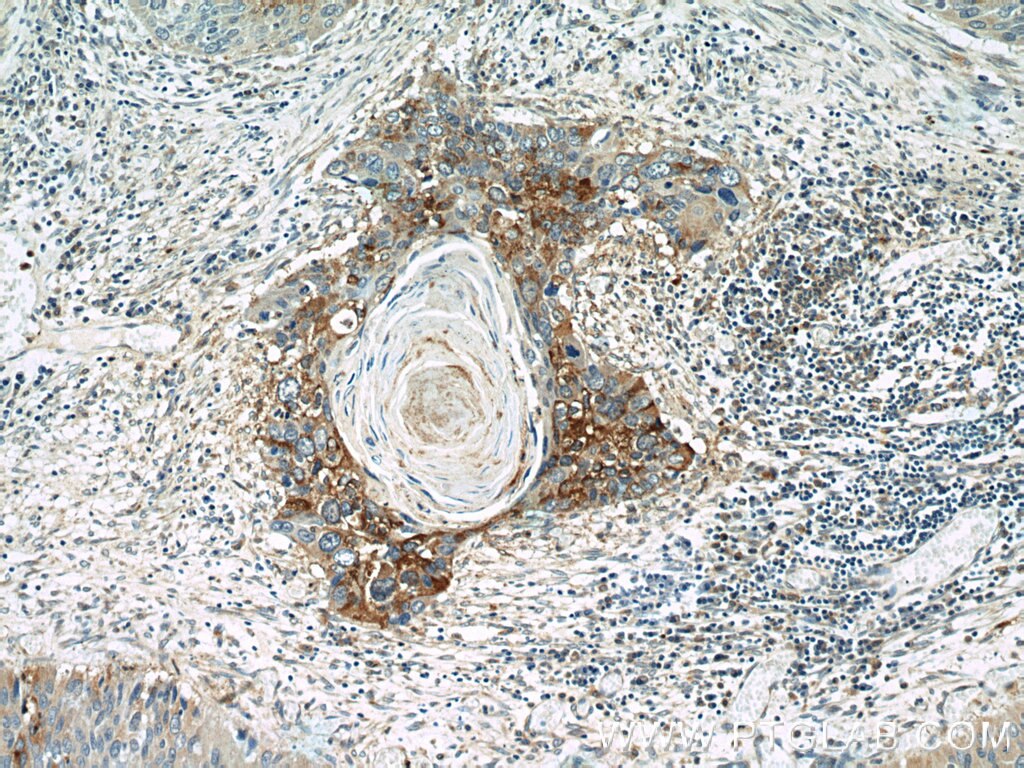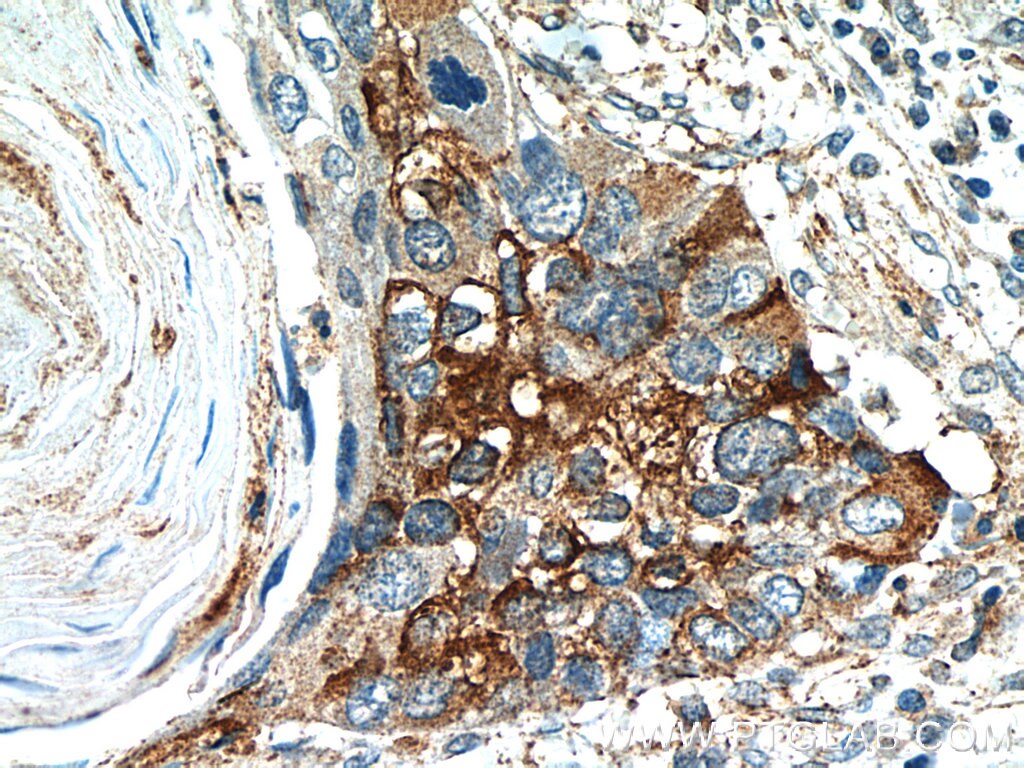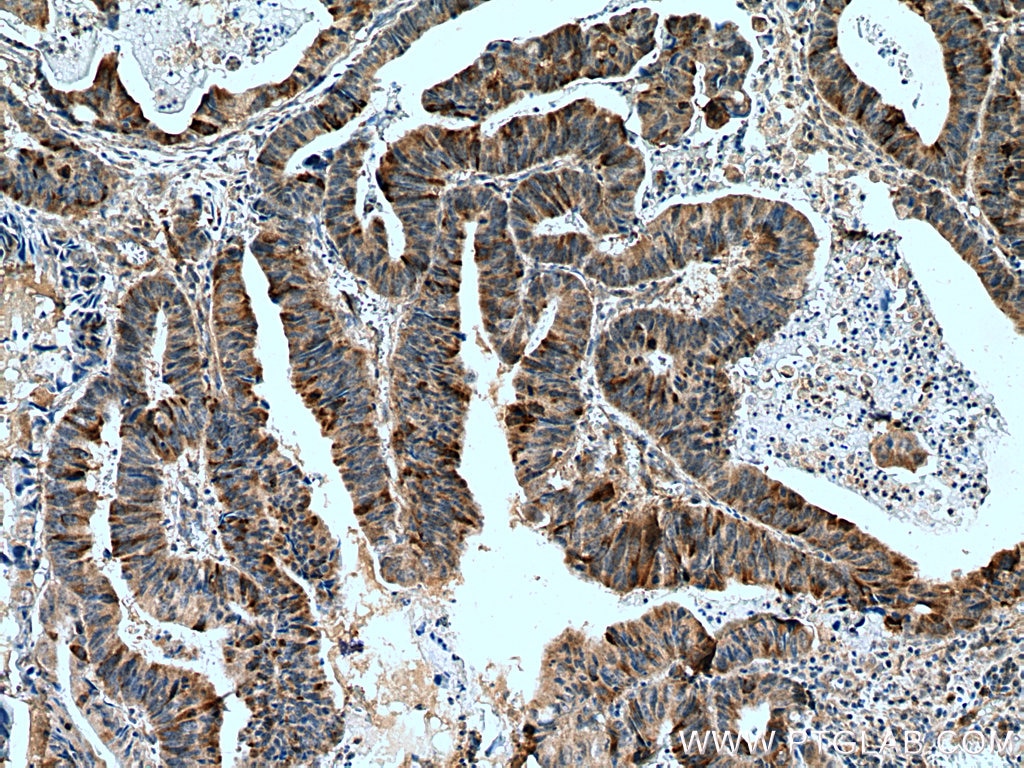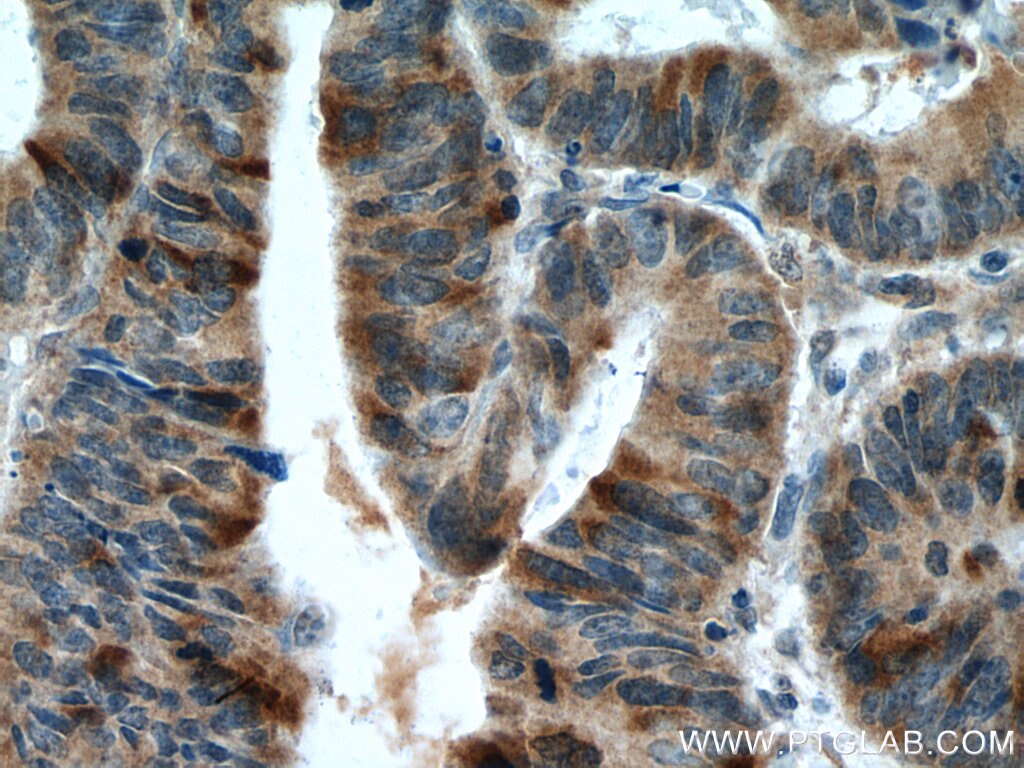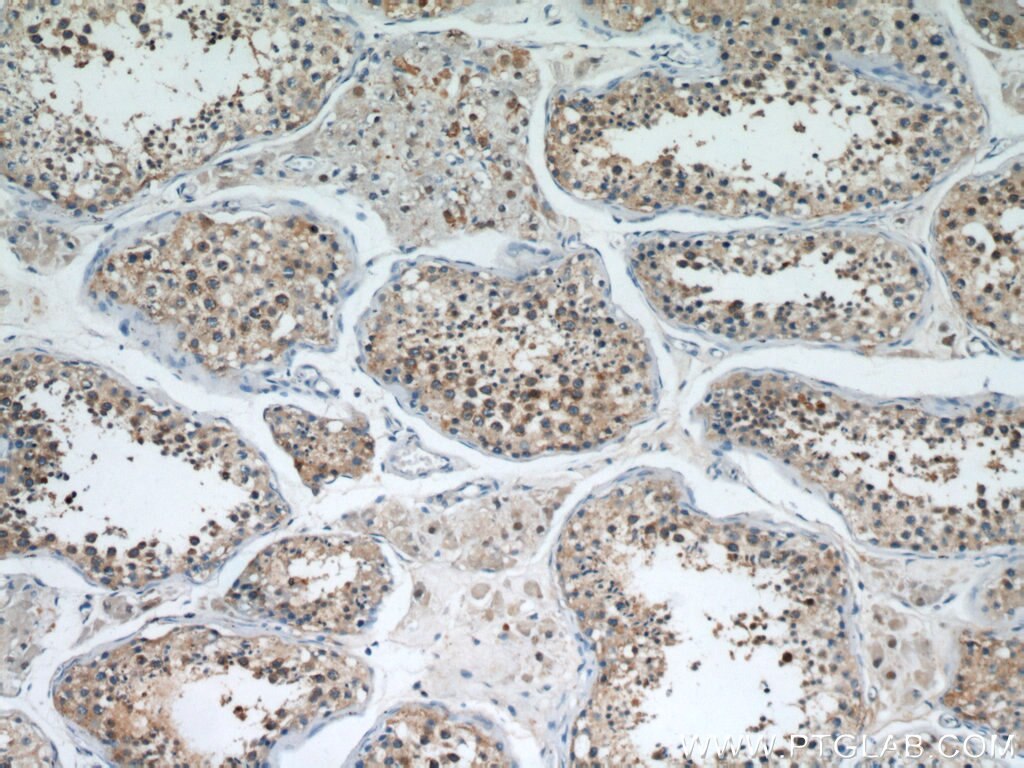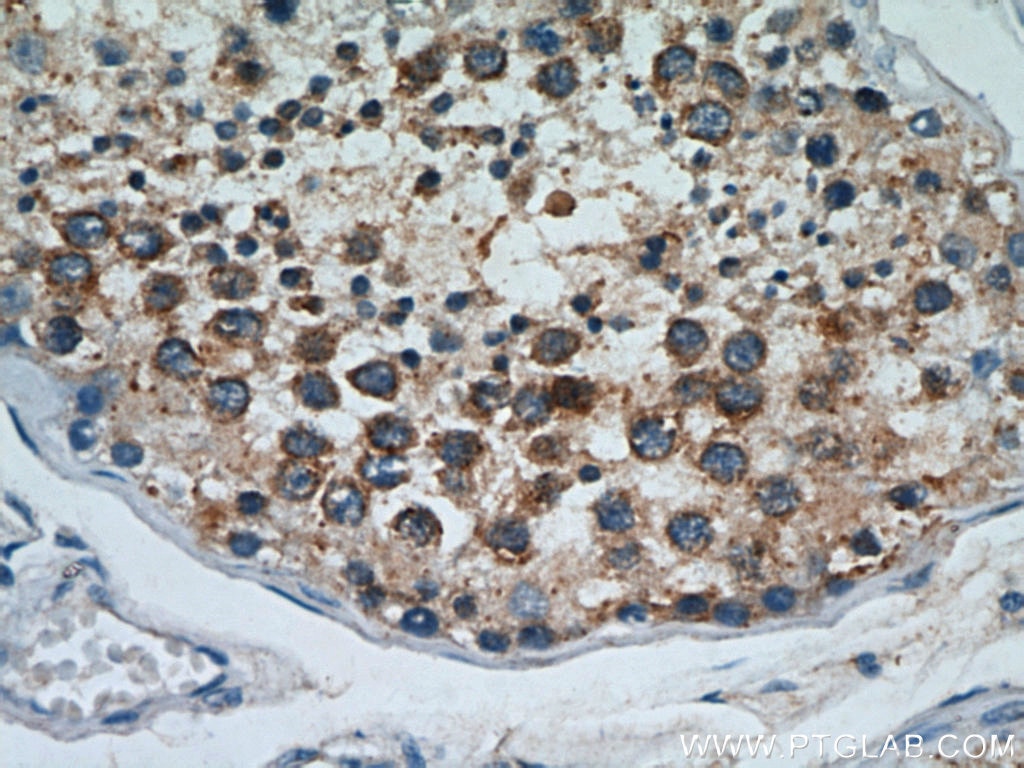- Phare
- Validé par KD/KO
Anticorps Polyclonal de lapin anti-Cyclin B2
Cyclin B2 Polyclonal Antibody for WB, IP, IHC, ELISA
Hôte / Isotype
Lapin / IgG
Réactivité testée
Humain, rat, souris
Applications
WB, IP, IHC, ELISA
Conjugaison
Non conjugué
N° de cat : 21644-1-AP
Synonymes
Galerie de données de validation
Applications testées
| Résultats positifs en WB | cellules A431, cellules DU 145, cellules HeLa, cellules K-562, tissu testiculaire de rat |
| Résultats positifs en IP | cellules A431 |
| Résultats positifs en IHC | tissu de cancer du col de l'utérus humain, tissu de cancer du côlon humain, tissu testiculaire humain il est suggéré de démasquer l'antigène avec un tampon de TE buffer pH 9.0; (*) À défaut, 'le démasquage de l'antigène peut être 'effectué avec un tampon citrate pH 6,0. |
Dilution recommandée
| Application | Dilution |
|---|---|
| Western Blot (WB) | WB : 1:2000-1:12000 |
| Immunoprécipitation (IP) | IP : 0.5-4.0 ug for 1.0-3.0 mg of total protein lysate |
| Immunohistochimie (IHC) | IHC : 1:20-1:200 |
| It is recommended that this reagent should be titrated in each testing system to obtain optimal results. | |
| Sample-dependent, check data in validation data gallery | |
Applications publiées
| KD/KO | See 1 publications below |
| WB | See 18 publications below |
| IHC | See 5 publications below |
| IP | See 1 publications below |
Informations sur le produit
21644-1-AP cible Cyclin B2 dans les applications de WB, IP, IHC, ELISA et montre une réactivité avec des échantillons Humain, rat, souris
| Réactivité | Humain, rat, souris |
| Réactivité citée | Humain, souris |
| Hôte / Isotype | Lapin / IgG |
| Clonalité | Polyclonal |
| Type | Anticorps |
| Immunogène | Cyclin B2 Protéine recombinante Ag16329 |
| Nom complet | cyclin B2 |
| Masse moléculaire calculée | 398 aa, 45 kDa |
| Poids moléculaire observé | 51 kDa |
| Numéro d’acquisition GenBank | BC105086 |
| Symbole du gène | Cyclin B2 |
| Identification du gène (NCBI) | 9133 |
| Conjugaison | Non conjugué |
| Forme | Liquide |
| Méthode de purification | Purification par affinité contre l'antigène |
| Tampon de stockage | PBS avec azoture de sodium à 0,02 % et glycérol à 50 % pH 7,3 |
| Conditions de stockage | Stocker à -20°C. Stable pendant un an après l'expédition. L'aliquotage n'est pas nécessaire pour le stockage à -20oC Les 20ul contiennent 0,1% de BSA. |
Informations générales
Cyclin B2 (CCNB2) is a member of cyclin family proteins, which regulate the activities of cyclin dependent kinases (CDKs) and different cyclins function spatially and temporally in specific phases of the cell cycle. Cyclin B2 serves a key role in progression of G2/M transition. Cyclin B2 has been found to be up-regulated in a variety of human cancers, such as adrenocortical carcinoma, breast carcinoma, colorectal adenocarcinoma, pituitary adenoma and gastric cancer. The aberrant expression of Cyclin B2 deregulates spindle checkpoints in the cell cycle and results in chromosomal instability (CIN), one of the signature phenotypes of most cancers. Moreover, serum circulating Cyclin B2 mRNA expression has been found increased in cancer patients and associated with cancer stage and metastasis status. Cyclin B2 can be detected double bands (PMID:1651338).
Protocole
| Product Specific Protocols | |
|---|---|
| WB protocol for Cyclin B2 antibody 21644-1-AP | Download protocol |
| IHC protocol for Cyclin B2 antibody 21644-1-AP | Download protocol |
| IP protocol for Cyclin B2 antibody 21644-1-AP | Download protocol |
| Standard Protocols | |
|---|---|
| Click here to view our Standard Protocols |
Publications
| Species | Application | Title |
|---|---|---|
Phytomedicine Ganoderma lucidum polysaccharide inhibits HSC activation and liver fibrosis via targeting inflammation, apoptosis, cell cycle, and ECM-receptor interaction mediated by TGF-β/Smad signaling | ||
EMBO Rep Mad2 promotes Cyclin B2 recruitment to the kinetochore for guiding accurate mitotic checkpoint.
| ||
Oxid Med Cell Longev Therapy-resistant and -sensitive lncRNAs, SNHG1 and UBL7-AS1 promote glioblastoma cell proliferation. | ||
Elife Elevated FBXO45 promotes liver tumorigenesis through enhancing IGF2BP1 ubiquitination and subsequent PLK1 upregulation. | ||
Oncotarget The synthetic antihyperlipidemic drug potassium piperate selectively kills breast cancer cells through inhibiting G1-S-phase transition and inducing apoptosis. | ||
Ecotoxicol Environ Saf Disruption of mitochondrial redox homeostasis as a mechanism of antimony-induced reactive oxygen species and cytotoxicity. |
